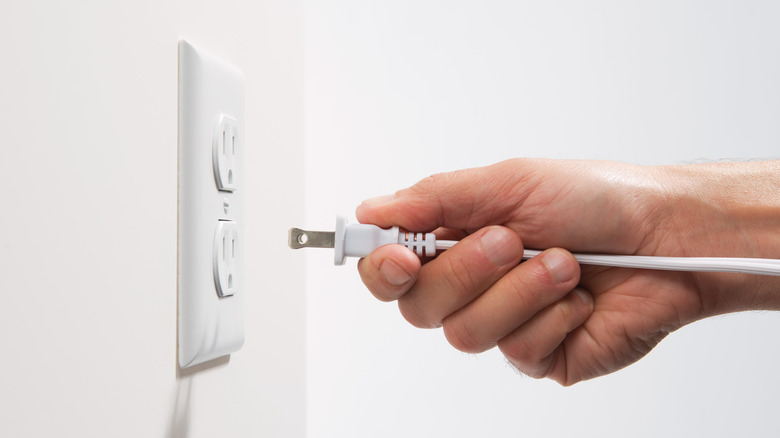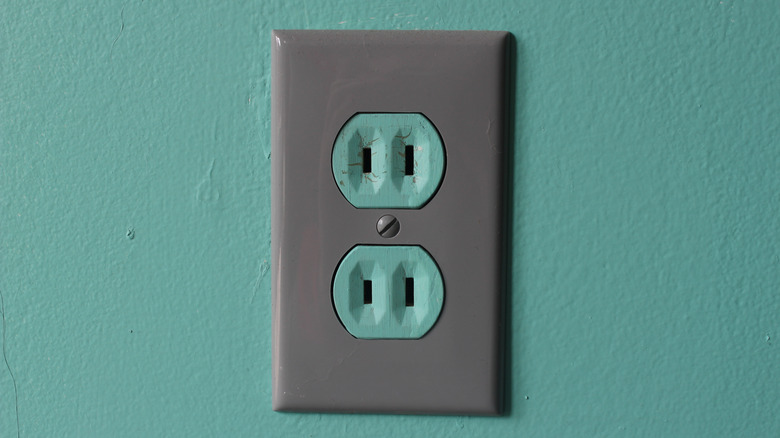Why Do Some Outlets Have 3 Prongs And Others Only Have 2?
If you've just moved into an older house, you may have realized some or all of the electrical outlets don't look like you're used to. If you have any two-prong outlets in your home, it's important to know the difference between them and standard outlets. There's a good chance that you have two-prong outlets if you live in a house that was built before the late 1960s that has not undergone rewiring.
The main difference between an outlet with three prongs and one that has two comes down to grounding. A two-prong outlet has a hot wire and a neutral wire, while a three-prong outlet also has those, plus a grounding wire. This extra prong is a safety feature that redirects excess electricity safely into the ground. Knowing this distinction matters since using an adapter to plug a three-prong device into a two-prong outlet is dangerous. If you have a few two-prong outlets and frequently use modern devices (and since you're reading this article, chances are you do), it's probably necessary to update your home's electrical outlets, as two-prong outlets are not up to code. However, it's worth noting that many modern devices feature two-prong plugs without the third grounding prong. This is because they're designed with an extra layer of insulation that provides adequate protection from surges and shocks. These devices meet safety standards, and they are safe to use in standard three-prong outlets.
What to do if you have two-prong outlets in your home
Three-prong outlets have been standard in new homes for decades because of the extra protection they provide. Without proper grounding, a power surge can damage sensitive components in electronics — and if you happen to be in contact with a metal portion of the appliance or device when the surge occurs, the resulting shock could be highly injurious or deadly. Using modern devices in outlets that aren't properly grounded is also a common cause of electrical fires.
If you have any two-prong outlets in your home, you may have gathered that upgrading them isn't as simple as just swapping out a two-prong outlet for a three-prong one. The old outlet will need to be rewired to ensure that the replacement outlet is properly grounded, which is an electrical project you don't want to attempt at home unless you're a professional. If your home has nothing but two-prong outlets, this is a sign that you'll need to call an electrician to perform a complete inspection of your electrical system. They may be able to simply replace the old outlets with new, grounded three-prong outlets — but in the worst-case scenario, you may also need to upgrade your electrical box from an old-style fuse box to a modern circuit breaker.

